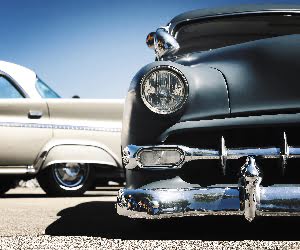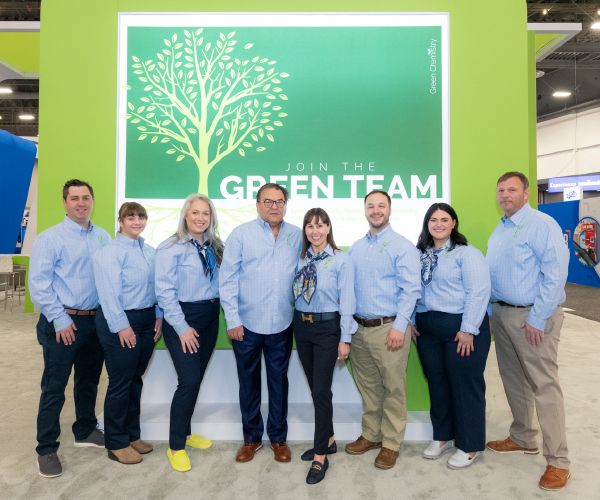
Blast from the Past - Winter 2014
October 2, 2014
5 minute ReadWe occasionally provide excerpts from The Great American Car Wash Story. Former ICA Executive Director Gus Trantham and veteran commercial writer John Beck wrote this book in 1994. It represents the most complete history we have found of the industry in North America. Enjoy.
Chapter 28
ROBO AIMS AT A MULTIMILLION DOLLAR MARKET
“A wand type coin-op was opened here two years ago. It did a fair amount of business until someone opened a new Robo-Wash, which is doing exceptionally well. However, I do not know what kind of a return they are making on their investment.”
And what, one might well have asked was a Robo-Wash?
What, indeed!
A good way to get an answer to this question would be to listen to Buck Stanton, who was elected in 1986 as president of what had become the International Carwash Association. As Buck explains it after taking a deep breath:
“Robo-Wash is a 2-minute automatic customer stay-in-car operation of pressurized spray with hot, soft, soapy water being applied evenly at 600 pounds of pressure to fully soap the car and then rinse it with cold, clear, rinse water, the customer then exiting the bay with a wet car, to proceed to vacuum areas for self-serve vacuuming or perhaps just off the lot and down the street.”
And how did Buck Stanton get involved in this car wash system?
Again let him tell it:
“My entry into the car wash business came two months after I left the U.S. Navy and came into the family business to run a chain of independent gasoline outlets known a Tankar Stations. During the summer of 1966 we broke ground almost simultaneously on the construction of eight two-bay Robo-Wash locations, mostly in Virginia where we live in the Tidewater area, but also in small towns in North Carolina, and one up in Dover, Delaware. By the end of 1970, I had personally placed corner pins for construction of 16 Robo locations.”
The origin of this new car wash system goes back to the spring of 1964 when Ralph Hedges and Jim Widner had gotten together to form a partnership as reported in an issue of the Franchise Journal:
“This new invention danced rings around the old. A track on the ground guided an automatic washer as it revolved around a car … the driver safe and snug inside. It washed underneath to stop corrosion damage to bumpers, fenderwells and the bottom of the car. It did this instantly and automatically as the driver pulled into the car wash bay. What once required 15 minutes, Robo-Wash did in two, entirely without hand labor.“
“Equipment in northern climates was winterized to prevent freeze damage and operated in below-zero weather without a quibble. Cars lined up regularly to let Robo wash the salt off in sub-zero climates. The basic washer unit was of attractive stainless steel. Robo-Rinse equipment solved a water-spotting problem in areas with unusually difficult water. Reclamation systems were invented for areas with very high water rates or shortages.”
Without a doubt, this new car washing system was unique, and as it started to appear in different parts of the country it certainly couldn’t be ignored by full-service tunnel operators.
What’s more, these two partners were aggressive merchandisers. They ran ads in “Life” and “Time” magazines. In 29 months, a thousand units had been installed by them and were operating in 48 states. By 1966 sales had shot past $4 million and almost tripled by the end of 1970.
What were the keys to this system of car washing that made it so successful almost from a dead start?
One key was the way Robo-Wash was designed as a complete package that included everything required, from washing equipment to a prefab building designed specifically to house it.
Second was the fast, efficient way it could be set up and put into operation in a matter of days.
Third was the use of franchising to make it easy for an individual to sign up for the system and get operating with confidence of back-up by a national organization.
Fourth was the way franchisees received a five-day training session that covered all service and maintenance.
Fifth was the way each franchisee received professionally prepared press kits and promotional materials such as newspaper ad mats and radio commercials for use in their immediate areas.
And sixth, was the way the Hedges and Widner team didn’t try to do it all by themselves but established over 30 distributors to share in the growth and profits. As Hedges was to say:
“Our esprit de corps has been high from the very beginning, and today our distributor organization is our biggest asset.”
What might also be described as a key asset was the way each of these Robo-Wash units was set up in an enclosed building so that operations could continue in freezing weather when the salt trucks started to appear on the road. It also included their, at that time, unique ability to wash the underside of cars, which could be promoted as a big selling feature.
It’s not surprising that Robo-Wash soon came to the attention of G.F. Keeton, a former president of the national Automatic Laundry & Cleaning Council and a former manager of the Philco-Ford commercial laundry equipment department. In 1967, Keeton joined Robo-Wash as president of its Automatic Car Wash Ltd. division to market the units internationally. How successful was Robo-Wash as a private enterprise? When Buck Stanton was asked if it had lived up to his expectations he answer came back fast:
“Yes, and in a surprising way. At first it was our idea to use car washing just to supplement sales in our chain of gasoline stations, but it wound up replacing them completely.”
Speaking in 1986, long after the demise of Robo-Wash as a functioning organization, Buck said:
“The Robo was mighty good to us in the years we’ve been using it, but even the best equipment will wear out. Over these years I’ve been able to establish contact with the OEM companies that made Robo parts, and hence have been able to purchase such parts directly as needed. All except the cart that runs on the track. But we’d like to keep these units operating in tip-top shape as long as we can. They continue to make money for us.”
How could a company as successful as Robo-Wash disappear?
The answer may be in the matter of bigness. In 1967 the company started to diversify into many different fields, such as chemicals, food marketing and computerized real estate sales. The company went public, was approved by the SEC and entered the stock market.
But already another great advance in car washing had made its appearance, which would in its own way revolutionize the full-service tunnel car wash business. This involved an invention that probably did more to spell the demise of the mitting bay than anything else. This was the device that came to be known as the wrap-around brush!
As an aside, it is interesting to note that Buck Stanton uses on his business stationery letterhead the words “Robo Autobath” with the illustration of a Robo car wash as a sign.








